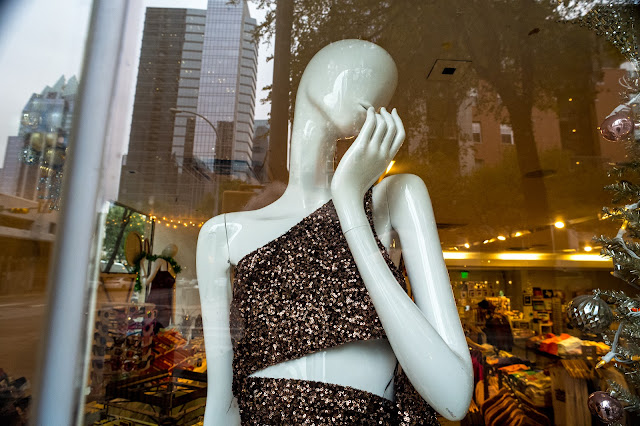Wednesday, November 23, 2022
Ah. The ancient Nikon 20mm f2.8 D wide angle lens. Maybe it was the adapter.... Maybe it was the operator.... A bad shooting day?
Tuesday, November 22, 2022
New lens (to me) arrives suddenly and unexpectedly.
Again...it was cold, damp and the day featured endless, plodding rain. The little heater in my office barely kept up with the falling temps. I put on my boots to keep my toes warm. I worried about seasonal affective disorder until I remembered that I live in central Texas and that next week it might be in the 90s with bright sun. Not time to cover up that air conditioner just yet...
I'd just wrapped up the first stage of accounting on last week's three projects. The first stage being the payment of all the vendors, the talent agency, assist, make-up, etc., etc. The fun billing happens today when I send the clients the final bills. But it's always anticlimactic when shoots are over.
My friend, Paul called to see what I was up to and to suggest an afternoon coffee at our usual joint, Trianon Coffee. It's just up the street from my place. I usually walk but not in a chilly downpour.
Paul is also a professional photographer so we sat with hot beverages and groused about the state of the industry, the inevitable changes in commercial work, the scarcity --- post Covid --- of assistants and support crew, the continuing ascendency of video, health insurance and retirement planning. And, of course, most of the conversation centered around cameras and lenses. We just about had everything figured out....
Near the end of our coffee conversation he pulled a plastic bag out and slide it across the table to me. "Here..." he said, "You might want to play around with this. If you want it it's yours." I opened the ZipLoc bag and pulled out a Nikon 20mm f2.8D lens, complete with caps and and a hood. Also a Nikon filter.
I just happened to have a Nikon to L mount adapter in the studio so I mounted up the lens as soon as I got home. I remember owning one of these lenses back in the days of film, using it to good effect shooting interiors when the jobs called for it. I also owned the Canon version and liked it equally well.
I didn't remember that the Nikon 20mm was so small. And lightweight. The focusing ring is almost completely undamped but that's typical for "D" lenses from that time. AF was becoming so popular I'm sure few people ever bothered to use their lenses in a manual focus mode. And in the early days of digital focusing medium speed wide angle lenses through smaller, lower res viewfinders was a complete game of hit or miss with "miss" nearly always winning.
Since I recently gave away my TTArtisan 20mm lens and kept my Panasonic 20-60mm lens for occasional wide shots I was happy to have, once again, a prime lens for those times when you just want to distill your shooting experience down to the absolute fundamentals. And limit yourself to one focal length.
If the weather breaks and my work life slackens I'll head out this afternoon to give this lens a tour of downtown Austin. I hope it's as nice an optic as I remember. Nikon sold a huge number of these so they couldn't be that bad.
Thanks Paul! Always fun to play with something new even if it's old.



















